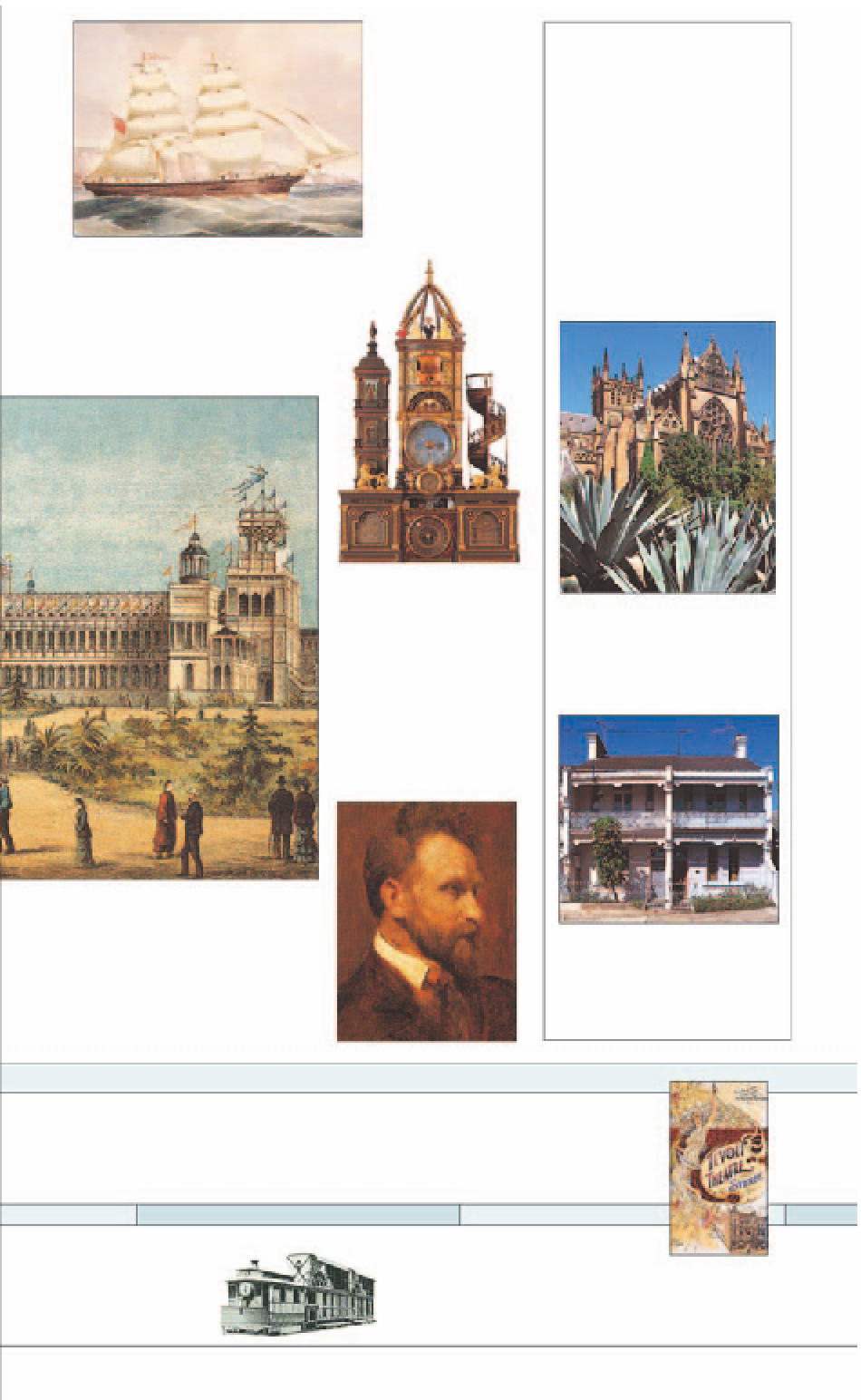Travel Reference
In-Depth Information
The Waverly
This clipper brig,
with its extra sails
and tall masts,
enabled the fast
transport of wool
exports and fortune
seekers hastening
to newly discovered
colonial gold fields.
WHERE TO SEE
VICTORIAN SYDNEY
Sydney's buildings reflect the
spirit of the age. The Queen
Victoria Building
(see p82)
,
Sydney Town Hall
(p87)
and
Martin Place
(p84)
mark
grand civic spaces. In stark
contrast, the Argyle Terraces
and Susannah Place
(p67)
in
The Rocks give some idea of
the cramped living conditions
endured by the working class.
The “Strasburg” Clock
In 1887, Sydney clockmaker Richard
Smith began work on this astronom-
ical model now in the Powerhouse
Museum
(see pp100-101).
Some of the exhibits
held in the Powerhouse
Museum
(see pp100-101)
were rescued from this
burning building.
St Mary's Cathedral
(see
p86)
, built in Gothic Revival
style, is thought to be the largest
Christian church in the former
“Empire”, outside Britain.
The exhibition
attracted
over one million people.
Arthur Streeton
In 1891, Streeton and Tom
Roberts, both Australian
Impressionist painters, set up
an artists' camp overlooking
Sydney Harbour in Mosman.
Victorian terrace houses
,
decorated with iron lace, began
to fill the streets of Paddington
(see pp122-7)
and Glebe
(p131)
from the 1870s onwards.
1890
First
electric trams
run between
Bondi Junction
and Waverley
Tivoli Theatre
programme
1880
The
Bulletin
is launched,
and becomes a literary icon.
Captain Moonlight, a notorious
bushranger, is hanged
1896
Moving
pictures come to
the Tivoli Theatre
1880
1890
1879
Steam tramway
travels from
the city to Redfern
Steam
tram
1891
Labor Party enters
the political arena
1888
Louisa
Lawson's journal
Dawn
published
1900
Queen Victoria consents
to the formation of the
Commonwealth of Australia.
Bubonic plague breaks out
1877
Caroline Chisholm, a
philanthropist who helped
immigrant women, dies












































